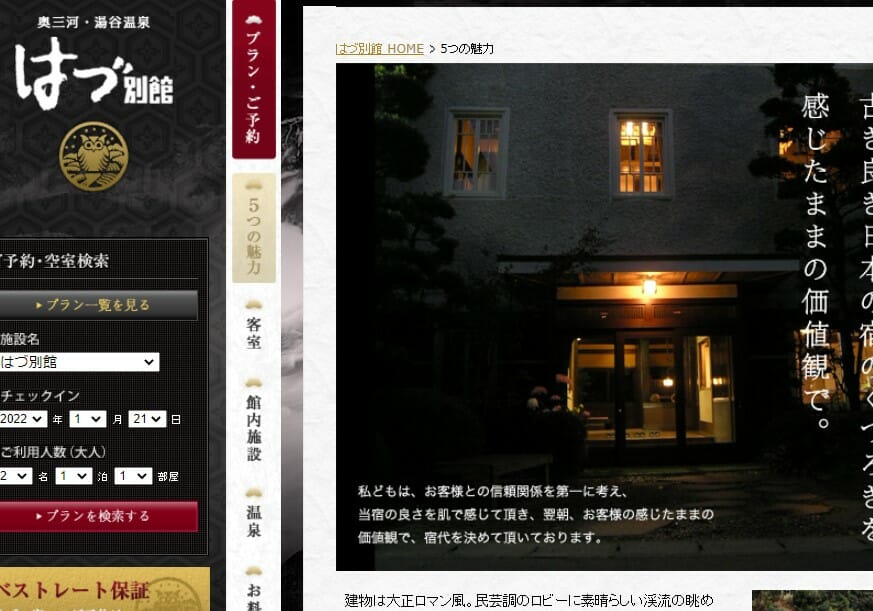It was 11 years ago today that Google announced an algorithm update that had a massive and far-reaching impact on SEO for years to come.
Here’s a complete history of the Google Panda algorithm update.
What was the Google Panda update?
Google Panda was a major algorithm update that impacted search rankings for 11.8% of queries in the U.S. Google said Panda was designed to reduce the rankings for low-quality sites (“sites which are low-value add for users, copy content from other websites or sites that are just not very useful”) and reward better rankings to high-quality sites (“sites with original content and information such as research, in-depth reports, thoughtful analysis and so on”).
The algorithm officially started rolling out on Feb. 23, but it wasn’t until Feb. 24 that we learned about it.
Panda didn’t only impact content farms. Websites of all sizes, across industries, felt the wrath of Panda. There were multiple reports of companies going out of business because they had relied on Google traffic for years. Once that traffic was gone, so was their business.
After its initial launch, Google announced several refreshes and updates to Panda on a near-monthly basis for the next two years (9 in 2011 and 14 in 2012). You will find a complete timeline and our coverage of those updates at the bottom of this guide.
Why was Google Panda launched?
In 2011, Google was trying to find a solution for its content farm problem. In case you’re not familiar with the term, a “content farm” was a website that paid freelance writers (typically poorly) to pump out as much content as fast as possible. The sole goal for these companies was to rank extremely well in Google’s search results for high-traffic keywords. Article quality was typically low.
Those high rankings meant these content farms got lots of traffic. And they monetized that traffic via display advertising (ironically, many of those sites were using Google AdSense.) Demand Media is probably the best example of the classic content farm model. Suite 101 was another big content farm.
Interestingly, many of the content issues Google was trying to solve in 2010 had come about after the Caffeine Update. Google was now crawling content faster, and its index grew rapidly. But it also meant some “shallow” content was ranking prominently. Business Insider even published an article with this rather blunt headline: Google’s Search Algorithm Has Been Ruined, Time To Move Back To Curation.” On TechCrunch, there was: “Why We Desperately Need a New (and Better) Google.”
Well, on Feb. 24, Google rocked the world of content farms – and the entire SEO industry.
Why did Google name it Panda?
In an interview with Wired, Amit Singhal revealed where the Panda name came from:
“Well, we named it internally after an engineer, and his name is Panda. So internally we called a big Panda. He was one of the key guys. He basically came up with the breakthrough a few months back that made it possible.”
Amit Singhal, Google’s head of search, in 2011
The full name of that Google engineer is Navneet Panda.
However, the update wasn’t referred to as “Panda” outside of Google when it initially launched. Search Engine Land founder Danny Sullivan called it the “Farmer’ update – until the Panda name was revealed in Wired. So if you see the Farmer name pop up in any of our old coverage of Panda, that’s why.]
What we know about the Google Panda algorithm
The most important thing you need to understand about Panda is that it evaluates the overall quality of the entire website.
Many myths and much speculation followed the arrival of Google Panda. Most of that is now irrelevant so we won’t rehash all of it in this guide.
Here’s a rundown of what we learned about how Google Panda worked.
Remove or improve low-quality content
On March 8, Michael Wyszomierski, a member of the Google webspam team, posted a message in a Webmaster Central help forum thread:
Our recent update is designed to reduce rankings for low-quality sites, so the key thing for webmasters to do is make sure their sites are the highest quality possible. We looked at a variety of signals to detect low quality sites. Bear in mind that people searching on Google typically don’t want to see shallow or poorly written content, content that’s copied from other websites, or information that are just not that useful. In addition, it’s important for webmasters to know that low quality content on part of a site can impact a site’s ranking as a whole. For this reason, if you believe you’ve been impacted by this change you should evaluate all the content on your site and do your best to improve the overall quality of the pages on your domain. Removing low quality pages or moving them to a different domain could help your rankings for the higher quality content.
– Michael Wyszomierski
What’s important to note here about Panda:
- It can identify content that is shallow, poorly written, or copied from other websites.
- Poorly written content can hurt rankings.
- Removing low-quality pages from part of a website can help high-quality pages rank better.
- Improving content (making it “useful”) can help your rankings.
Later on, Google tried to walk this back a bit, recommending adding high-quality content and fix the low-quality content, rather than removing content. This is most likely because many people started taking a metaphorical blowtorch to their content when a scalpel was needed.
Google on how to evaluate whether a site is ‘high-quality’
On May 6, 2011, Google published a list of 23 questions to explain how Google searches for high-quality sites, to help those that Panda had been negatively impacted:
- Would you trust the information presented in this article?
- Is this article written by an expert or enthusiast who knows the topic well, or is it more shallow in nature?
- Does the site have duplicate, overlapping, or redundant articles on the same or similar topics with slightly different keyword variations?
- Would you be comfortable giving your credit card information to this site?
- Does this article have spelling, stylistic, or factual errors?
- Are the topics driven by genuine interests of readers of the site, or does the site generate content by attempting to guess what might rank well in search engines?
- Does the article provide original content or information, original reporting, original research, or original analysis?
- Does the page provide substantial value when compared to other pages in search results?
- How much quality control is done on content?
- Does the article describe both sides of a story?
- Is the site a recognized authority on its topic?
- Is the content mass-produced by or outsourced to a large number of creators, or spread across a large network of sites, so that individual pages or sites don’t get as much attention or care?
- Was the article edited well, or does it appear sloppy or hastily produced?
- For a health related query, would you trust information from this site?
- Would you recognize this site as an authoritative source when mentioned by name?
- Does this article provide a complete or comprehensive description of the topic?
- Does this article contain insightful analysis or interesting information that is beyond obvious?
- Is this the sort of page you’d want to bookmark, share with a friend, or recommend?
- Does this article have an excessive amount of ads that distract from or interfere with the main content?
- Would you expect to see this article in a printed magazine, encyclopedia or book?
- Are the articles short, unsubstantial, or otherwise lacking in helpful specifics?
- Are the pages produced with great care and attention to detail vs. less attention to detail?
- Would users complain when they see pages from this site?
Panda is part of Google’s core algorithm
On Jan. 12, 2016, we reported that Panda had become part of Google’s core algorithm. Google never confirmed an exact date when this changed. All we know with 100% certainty is that it happened at some point after Google’s last confirmed Panda update (4.2, July 17, 2015).
So even though it’s been years since Google announced an update, Panda lives on. It is part of the core algorithm, which means it is still impacting SEO, more than a decade after its launch.
The lasting impact of Google Panda today
Google Panda had an impact on SEO that lasts to this day. Here are just three big changes that came from Panda:
- E-A-T. The concept of Expertise, Authoritativeness, and Trustworthiness (E-A-T, as found in the quality rater guidelines) can be traced back to the content farm problem. Google always wants to reward websites that publish high-quality content by experts who are authorities on a subject. The quality rater guidelines are the ultimate guide for how not to be a content farm.
- Content marketing. Content marketing, as a term, wasn’t really a thing before Panda. Just go to Google Trends and you’ll see when the term started gaining popularity, and not by coincidence. The term itself may date back to 1996 (and the concept itself is as old as marketing), but content marketing as its own thing was essentially born as a result of Panda.

- Differentiate or die. Perhaps the biggest lessons coming out of Google Panda was to never put all your eggs in one basket. Especially not Google’s. Relying on any one channel for all, or nearly all, of your traffic and income is not a business plan. It is a gamble. Never leave yourself at the mercy of any one channel. or platform – because you have no control over a third-party. If one algorithm change can wipe our your entire company overnight, you’re doing it wrong.
A complete Google Panda timeline
Below is the complete list of all 28 confirmed Panda updates and refreshes. Oh, and since we didn’t discuss that yet, an update meant Google somehow changed the Panda algorithm, while a refresh meant Google reapplied all the same signals from the most recent update.
Here’s Search Engine Land’s coverage of Panda, from 2011 to 2016:
Feb. 23, 2011: Panda Update 1.0
- Google Forecloses On Content Farms With “Panda” Algorithm Update
- Demand: Google Changes Have Produced “No Material Impact” Yet
- Number Crunchers: Who Lost In Google’s Panda Algorithm Change?
- Google Trying To Minimize Collateral Damage From “Farmer” Update
- Google: We’ve Made No “Significant” Changes To The Farmer Update
- More Farmer Update Winners, Losers: Wikihow, Blippr & Yahoo Answers
- Google Speaks More About The Farmer Update, AKA Panda Update
- PPC Data On “Farmer” Shows Traffic Quality Improvement
- The Farmer/Panda Update: New Information From Google and The Latest from SMX West
April 11, 2011: Google Panda Update 2.0
May 9, 2011: Panda Update 2.1
June 21, 2011: Panda Update 2.2
- Official: Google Panda Update 2.2 Is Live
- Why Google Panda Is More A Ranking Factor Than Algorithm Update
July 23, 2011: Panda Update 2.3
Aug. 12, 2011: Panda Update 2.4
Sept. 28, 2011: Panda Update 2.5
Oct. 19, 2011: Panda Update 3.0
Nov. 18, 2011: Panda Update 3.1
Jan. 18, 2012: Panda Update 3.2
Feb. 27, 2012: Panda Update 3.3
March 23, 2012: Panda Update 3.4
April 19, 2012: Panda Update 3.5
April 27, 2012: Panda Update 3.6
June 8, 2012: Panda Update 3.7
June 25, 2012: Panda Update 3.8
July 24, 2012: Panda Update 3.9
Aug. 20, 2012: Panda Update 3.9.1
Sept. 18, 2012: Panda Update 3.9.2
Sept. 27, 2012: Panda Update #20
Nov. 5, 2012: Panda Update #21
Nov. 21, 2012: Panda Update #22
Dec. 21, 2012: Panda Update #23
Jan. 22, 2013: Panda Update #24
March 14, 2013: Panda Update #25
May 20, 2014: Panda Update 4.0
Sept. 23, 2014: Panda Update 4.1
July 17, 2015: Panda Update 4.2
- Google Panda 4.2 Is Here; Slowly Rolling Out After Waiting Almost 10 Months
- Google: Panda 4.2 Is Rolling Out Slowly For Technical Reasons
- What Happened To The Google Panda 4.2 Update? Did It Make A U-Turn?
- Google Panda 4.2 Is Still Rolling Out
New on Search Engine Land
About The Author
Danny Goodwin is Senior Editor of Search Engine Land. In addition to writing daily about SEO, PPC, and more for Search Engine Land, Goodwin also manages Search Engine Land’s roster of subject-matter experts. He also helps program our conference series, SMX – Search Marketing Expo.
Prior to joining Search Engine Land, Goodwin was Executive Editor at Search Engine Journal, where he led editorial initiatives for the brand. He also was an editor at Search Engine Watch. He has spoken at many major search conferences and virtual events, and has been sourced for his expertise by a wide range of publications and podcasts.
Note: This article have been indexed to our site. We do not claim legitimacy, ownership or copyright of any of the content above. To see the article at original source Click Here














